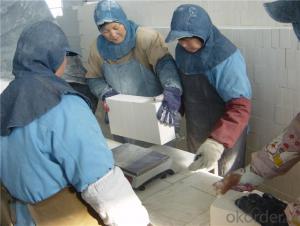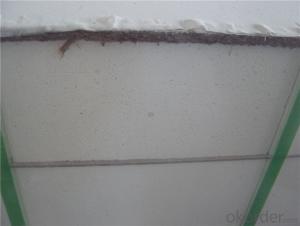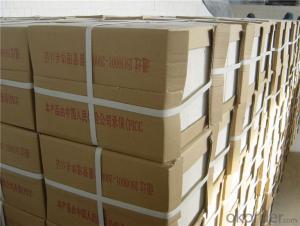High-Temperature Light Weight Fire Clay Insulation Bricks
- Loading Port:
- Shanghai
- Payment Terms:
- TT OR LC
- Min Order Qty:
- 1 m.t.
- Supply Capability:
- 1000 m.t./month
OKorder Service Pledge
OKorder Financial Service
You Might Also Like
Thermal Insulation Fire Clay Brick
Refractory brick is a block of refractory ceramic material used in lining furnaces, kilns, fireboxes, and fireplaces.
We provide high quality Refractory Fire Bricks that are used on wide range in the various industries like Cement, Glass and Steel. Refractory Fire Bricks are provided as per the quantity and specifications required by the customers. We provide an extensive range of Refractory Fire Bricks at reasonable prices that depend upon the quantity ordered.
Application
Insulating Fire Brick are used for the lining of converter, alternating current arc furnace, direct Current arc furnace and the ladle slag line, etc.
Company Advantage
(1)Long Insulating Fire Brick manufacture history: 25 years manufacturer
(2)Advanced equipment
(3)Diversification of production standards: ISO ANSI FEPA JIS ASTM
(4)Flexible payment: T/T L/C D/P D/A
(5)Professional marketing team and after-sale service
Insulating Fire Brick main feature:
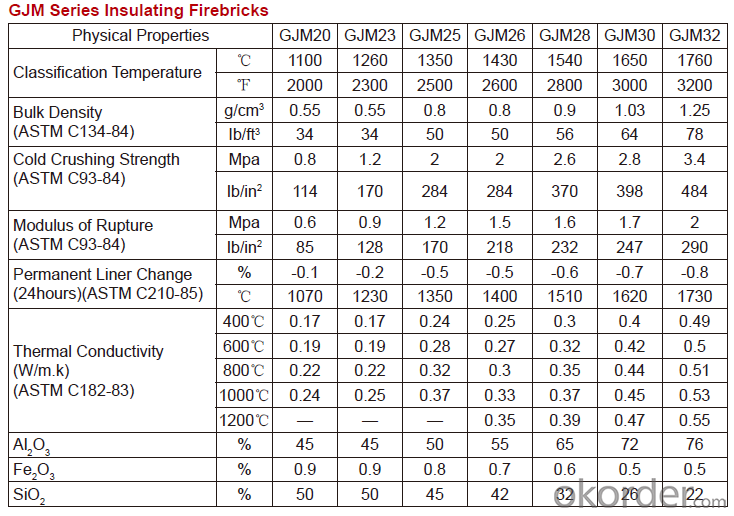
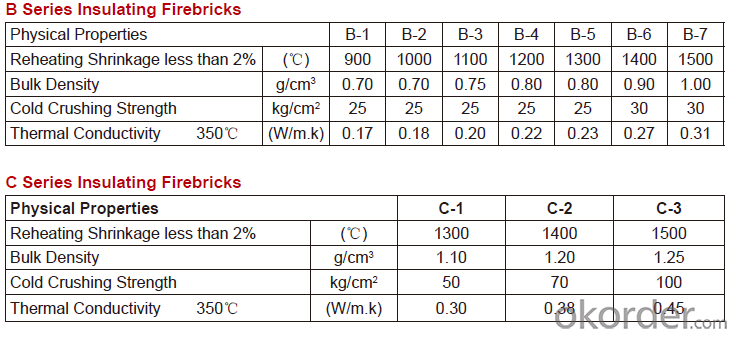
Equipment
1 unit of Ceramic Abrasive (SG Abrasive) pilot production line
2 units of Compact grain Abrasive pilot production lines
1 unit of high-end coated abrasives (abrasive cloth) production line
2 units of Boron Carbide production lines
3 large flexible crushing and sieving lines for grit production lines
6 units of 5000KVA-10000KVA dumping type electric arc furnaces for Brown Fused Alumina fusion
Q1 What’s the transport method?
A1 FCL delivery goods with wooden pallet or wooden case by sea; If LCL delivery, must with wooden case; Sometimes need open top, flat rack or bulk cargo.
Q2 What’s the required payment term?
A2 Generally 30% TT as the prepayment, 70% TT before delivery. If need, 100% Irrevocable Letter of Credit or negotiation.
Q3 Which country are our products exported to?
A3 Apart from entire Chinese market, the US, Russia, Japan, Korea, Australia and some Southeast Asian Nations.
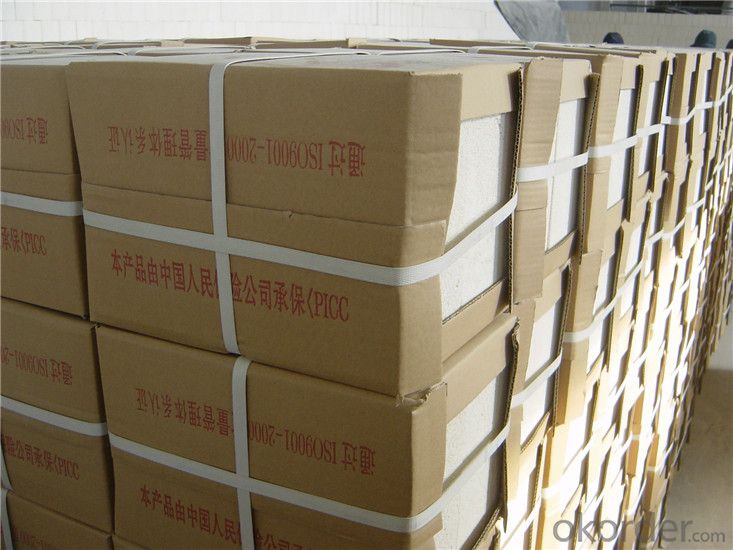

- Q:Can insulating fire bricks be used for fireplace construction?
- Yes, insulating fire bricks can be used for fireplace construction. These bricks are designed to withstand high temperatures and provide excellent insulation, making them suitable for lining the inside of fireplaces to retain heat and improve energy efficiency.
- Q:Can insulating fire bricks be used in the construction of lime production kilns?
- Yes, insulating fire bricks can be used in the construction of lime production kilns. Insulating fire bricks are designed to have excellent thermal insulation properties, which makes them suitable for high-temperature applications like lime production kilns. They can help in maintaining the desired temperature inside the kilns and reducing heat loss, enhancing the efficiency and productivity of the lime production process.
- Q:Do insulating fire bricks require any curing before use?
- Yes, insulating fire bricks do require curing before use. Curing is the process of drying out and hardening the bricks to ensure they can withstand high temperatures without cracking or breaking. This involves gradually increasing the temperature over a period of time, typically starting with a low heat and gradually increasing it over several hours. Curing helps to remove any moisture or volatile compounds that may be present in the bricks, which could otherwise cause them to crack or explode when exposed to high temperatures. It is important to follow the manufacturer's instructions for curing the fire bricks to ensure their proper installation and longevity.
- Q:Are insulating fire bricks resistant to thermal expansion or contraction?
- Yes, insulating fire bricks are resistant to thermal expansion and contraction. These bricks are made of materials that have low thermal conductivity, allowing them to withstand high temperatures without undergoing significant expansion or contraction. This property makes them ideal for applications where thermal stability and insulation are required, such as in kilns, furnaces, and other high-temperature environments.
- Q:Are insulating fire bricks resistant to carbon monoxide attack?
- Yes, insulating fire bricks are resistant to carbon monoxide attack. These bricks are designed to withstand high temperatures and are made from materials that have low thermal conductivity. This makes them highly resistant to chemical reactions, including carbon monoxide attack.
- Q:Are insulating fire bricks resistant to molten salts?
- Yes, insulating fire bricks are generally resistant to molten salts. These bricks are specifically designed to withstand high temperatures and offer excellent thermal insulation. They are often made from special refractory materials that have a high melting point and are chemically inert. Molten salts, on the other hand, are highly corrosive and can cause damage to many materials. However, insulating fire bricks are able to withstand the corrosive nature of molten salts due to their unique composition. Their dense structure and high refractory properties allow them to resist the corrosive effects of molten salts for prolonged periods. Furthermore, insulating fire bricks are often used in industries such as metal smelting, glass manufacturing, and chemical processing, where molten salts are commonly encountered. Their resistance to molten salts makes them ideal for applications involving these corrosive substances. However, it is important to note that the exact resistance of insulating fire bricks to molten salts can vary depending on the specific composition of the brick and the type of molten salt being used. Therefore, it is recommended to consult with the manufacturer or a specialist in refractory materials to ensure the suitability of insulating fire bricks for a particular application involving molten salts.
- Q:Can insulating fire bricks be used in the construction of lime recovery kilns?
- Yes, insulating fire bricks can be used in the construction of lime recovery kilns. Lime recovery kilns are high-temperature industrial furnaces used to convert limestone (calcium carbonate) into lime (calcium oxide) through a process called calcination. Insulating fire bricks are designed to withstand high temperatures and provide excellent thermal insulation. They are made from lightweight refractory materials, such as clay or silica, and have low thermal conductivity. In lime recovery kilns, where temperatures can reach up to 900-1200 degrees Celsius, insulating fire bricks can be used to line the walls, floors, and roofs of the kiln. Their high insulating properties help to reduce heat loss and improve energy efficiency by keeping the heat inside the kiln. This leads to lower fuel consumption and cost savings. Furthermore, insulating fire bricks have good resistance to thermal shock, which is crucial in the lime recovery process. The kilns undergo repeated heating and cooling cycles, and the bricks must be able to withstand these temperature changes without cracking or disintegrating. Overall, insulating fire bricks are a suitable choice for lime recovery kilns due to their ability to withstand high temperatures, provide thermal insulation, and resist thermal shock.
- Q:Can insulating fire bricks be used in aluminum smelting furnaces?
- Yes, insulating fire bricks can be used in aluminum smelting furnaces. Insulating fire bricks are designed to have low thermal conductivity, which helps to minimize heat losses in the furnace. This property makes them suitable for use in high-temperature applications, such as aluminum smelting. In addition, insulating fire bricks have excellent thermal shock resistance, allowing them to withstand rapid temperature changes that occur during the smelting process. Their lightweight nature also makes them easier to handle and install in the furnace. Overall, insulating fire bricks are a viable option for use in aluminum smelting furnaces, helping to improve energy efficiency and reduce operating costs.
- Q:Can insulating fire bricks be used in high-temperature insulation applications?
- Indeed, high-temperature insulation applications can employ insulating fire bricks. These bricks are specifically engineered to endure and preserve heat in elevated temperatures. With their low thermal conductivity and exceptional insulation capabilities, they prove to be the perfect choice for containing and insulating high temperatures. Their widespread usage can be observed in industries like steel, glass, and ceramics, as well as in furnaces, kilns, and other equipment operating at extreme temperatures. By effectively retaining heat and minimizing energy loss, insulating fire bricks offer a dependable and efficient insulation solution for high-temperature environments.
- Q:Can insulating fire bricks be used in the construction of pottery ovens?
- Yes, insulating fire bricks can be used in the construction of pottery ovens. Insulating fire bricks are specifically designed to have excellent thermal properties, such as low thermal conductivity and high resistance to heat. These qualities make them ideal for insulating and retaining heat in pottery ovens, allowing for more efficient and controlled firing of clay and ceramic materials. Additionally, insulating fire bricks are lightweight, which makes them easier to handle and install in the construction process. Overall, the use of insulating fire bricks in pottery ovens helps to create a consistent and even distribution of heat, resulting in improved firing outcomes and energy efficiency.
1. Manufacturer Overview |
|
|---|---|
| Location | |
| Year Established | |
| Annual Output Value | |
| Main Markets | |
| Company Certifications | |
2. Manufacturer Certificates |
|
|---|---|
| a) Certification Name | |
| Range | |
| Reference | |
| Validity Period | |
3. Manufacturer Capability |
|
|---|---|
| a)Trade Capacity | |
| Nearest Port | |
| Export Percentage | |
| No.of Employees in Trade Department | |
| Language Spoken: | |
| b)Factory Information | |
| Factory Size: | |
| No. of Production Lines | |
| Contract Manufacturing | |
| Product Price Range | |
Send your message to us
High-Temperature Light Weight Fire Clay Insulation Bricks
- Loading Port:
- Shanghai
- Payment Terms:
- TT OR LC
- Min Order Qty:
- 1 m.t.
- Supply Capability:
- 1000 m.t./month
OKorder Service Pledge
OKorder Financial Service
Similar products
New products
Hot products
Related keywords
